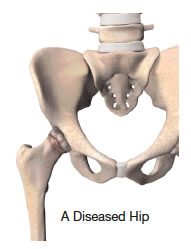Dedicated to Our Patients


 Osteoarthritis (OA)
Osteoarthritis (OA)
Sometimes called degenerative arthritis because it is a “wearing out” condition involving the breakdown of cartilage and bones. When cartilage wears away, the bones rub against each other, causing pain and stiffness. OA usually occurs in people aged 50 years and older, and frequently in individuals with a family history of arthritis.
Rheumatoid Arthritis (RA)
Causes the synovium to become thickened and inflamed. In turn, too much synovial fluid is produced within the joint space, which causes a chronic inflammation that damages the cartilage. This results in cartilage loss, pain, and stiffness. RA affects women about 3 times more often than men, and may affect other organs of the body.
Post-traumatic Arthritis
May develop after an injury to the joint in which the bone and cartilage do not heal properly. The joint is no longer smooth and these irregularities lead to more wear on the joint.
Avascular Necrosis
Can result when bone is deprived of its normal blood supply. Without proper nutrition from the blood, the bone’s structure weakens and may collapse and damage the cartilage.
Paget’s Disease
A bone disease that often affects the hip. Bone formation is sped up, causing the density and shape of the bone to change. Joint pain can also be caused by deformity or direct injury to the joint. In some cases, joint pain is made worse by the fact that a person will avoid using a painful joint, weakening the muscles and making the joint even more difficult to move.
Treatment Options
Following the orthopaedic evaluation, your orthopaedic surgeon will review and discuss the results with you. Based on his or her diagnosis, your treatment options may include: